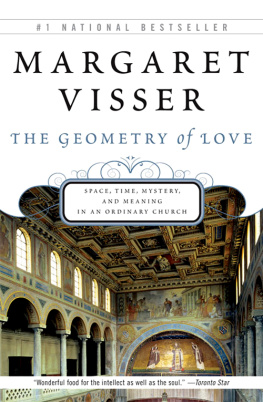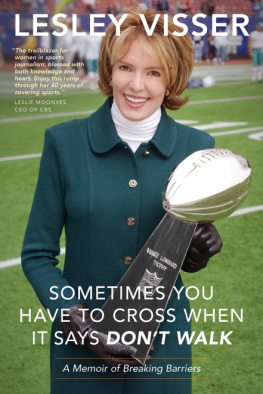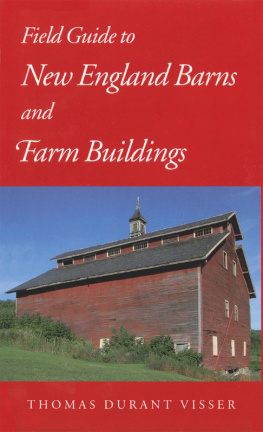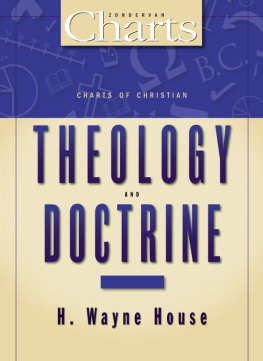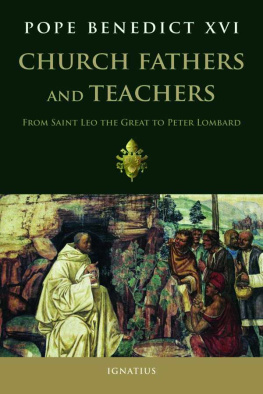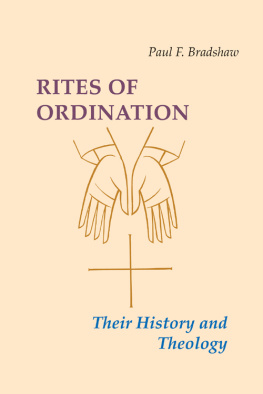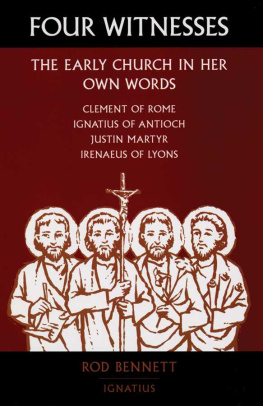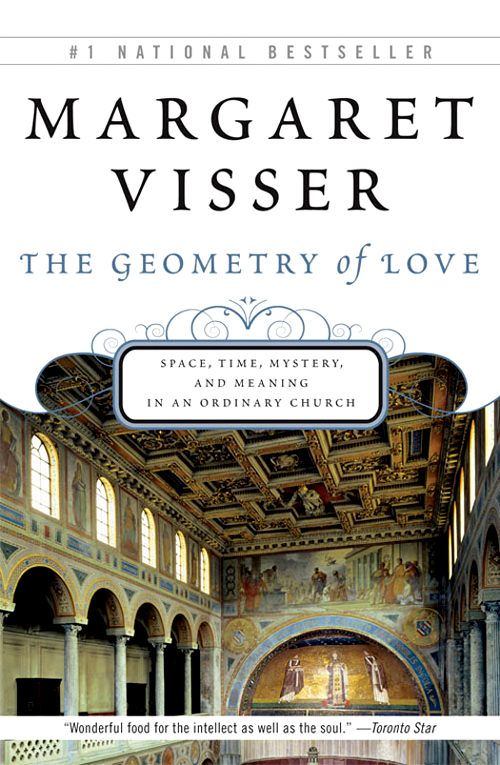MARGARET
VISSER
THE GEOMETRY OF LOVE

FOR COLIN,
of course
Do you know, I once came across a book which enumerated the uses of common salt and sang its praises in the most extravagant terms, and not only salt but all kinds of everyday commodities. Now isnt it, as I say, an extraordinary thing, Eryximachus, that while all these screeds have been written on such trivial subjects, the god of love has found no man bold enough to sing his praises as they should be sungis it not, in short, amazing that there should be so little reverence shown to such a god!
Plato, Symposium
Wer den Dichter will verstehen
muss in Dichters Lande gehen.
(Those who poets would unravel
Must to poets country travel.)
Goethe, Der Westoestlichen Diwan
CONTENTS
People who include sightseeing in their travels can scarcely avoid visiting churches. Places of worshiptemples, chapels, pagodas, synagogues, cathedrals, and mosquesare often the oldest, and usually the most famous, the strangest, the most beautiful buildings any town has to offer. For these and other reasons, they tend to survive much longer than anything else in the town.
I must have visited hundreds of religious edifices in my life, most of them churchesugly ones and lovely ones, dusty old neglected ones, plain ones, vulgar ones, and awe-inspiring masterpieces. The famous ones have guide books explaining them. These will tell you, typically, how many columns a church has, and also give you their heights and diameters. They will describe for you the faade before which you are standing, and star the objects you are supposed to look at, giving their creators and their dates. All this is potentially useful information, and might serve to focus a resolute visitors attention. The problem is that guidebooks offer little else.
I remember sitting at the back of a tiny, isolated church some years ago, on top of a hill in Spain. A Japanese tourist was driven up to the front door and led round the building by a guide he must have hired in the town some distance away. The guide told him, in English, the dates of various parts of the building and then proceeded to dilate upon the superb stone vaulting. The tourist did not even raise his head to look at this. He stared aghastas well he mightat a horrific, life-sized painted carving of a bleeding man nailed to two pieces of wood. When the guide had stopped talking, the man gestured wordlessly towards the statue. The guide nodded, smiled, and told him in which century it had been carved.
Experiences like this oneI have known manyand my own unanswered questions combined to make me embark on this book. I had once written an account of the meanings, the culture, and the history embodied in a single meal. I set out to do the same thing now with a church: take one particular example and see what I could find out about it. Casting my net as widely as possible in order to explain it to myself, I resolved to look at history and politics, theology, anthropology, art history and technology, iconography, hagiography, and folklore; I would find out about the community of people who used the building. I would discover the meanings of symbols, consider the manner in which this building expresses temporal concepts by means of space, track down if I could both the historical background and the living connotations of each artifact. If there was a statue of a woman in a voluminous pleated garment holding her heart in one hand and a staff in the other, I would find out who she was and what she had done, what her disembodied heart was doing in her hand, why she was wearing those clothes and carrying that staff, and for what reason she came to be represented in that particular church. I would be interested in art, of course, and in the history of beautiful objects (if any) in the church I chosebut I would also want to know what that art was depicting, what it was trying to say.
I had two major problems to resolve before I started the project. First: what church should I choose? I decided early on that it would have to be a Christian church: I simply did not know enough to talk about a mosque or a Buddhist temple. That decision helped meeventuallyto solve in my own mind my second problem: I am myself a Christian. How could I honestly write a non-devotional book about a church without prejudice and above all without appearing to be trying to persuade other people to agree with my own beliefswith the beliefs expressed, after all, by this church? A friend who is a well-known art historian once told me how, as a student, she had been assured by her colleagues that any scholarly accomplishment in the area of Christian art was out of the question for her because she was a believer.
It occurred to me then, and I am sure of it now, that it is much more likely to be helpfulnot the reverseto investigate a subject when you know it from the inside. Such knowledge is not scholarship, of coursebut then, neither is being an outsider any guarantee of either accuracy or insight. Surprisingly many people have insisted that in order to understand something you are always better off not participating in it. This attitude has, fortunately, begun to arouse suspicion in recent years, notably among anthropologists: it is no longer thought de rigueur to discount what the natives are telling you is going on. It has also come to be admitted that no observer, not even a scholar, has a blank slate for a mind; it is therefore detrimental to truth to claim total objectivity.
In churches, especially Roman Catholic churches, I am a native, and a lot of what is going on I have known from childhood. Looking for a church to investigate, I chose in the end a Roman Catholic one, small, fairly well known but not too famous: SantAgnese fuori le Mura, St. Agnes outside the Walls, of Rome. This is a church I had visited only once before I began researching this book. That occasion was twenty-five years ago. I knew almost nothing about the historical background of the building when I first saw it, but SantAgneses, and little round Santa Costanzas nearby, remained in my memorysmall and far and sharply vivid. I recalled grandeur in littleness, gorgeousness of colour (purple, pink, grey, and gold in SantAgneses; terracotta, green, and white in Santa Costanzas), and always there lurked hints of the smell of fresh flowers. I scarcely remembered that in order to enter SantAgneses you had to descend a long staircasealthough I did know that somehow the experience of this church went deep.
I felt on that first visit (I was at the time an unbeliever) that this was a place where you could almost reach out and touch the early Christians of Rome, that this church was uncommonly close to what they would have known and liked. Studying SantAgneses in detail during the past few years has helped me understand just how true that instinctive first response was in a literal, archaeological sense. The church, however, has known many vicissitudes down the centuries, and it is in fact now very modern in its appealin its simplicity and clarity of purpose, and even in its modern-and-Baroque imaging of early Christian Rome. It is a building that feels as if it has been on a very long journey out of the past, has altered and suffered and gathered accretions, and now it is here with us, still bearing its cargo of memories, and still carrying out the purpose for which it was built.
Little did I guess, when I chose SantAgneses as the church I would write about, how much there was for me to learn! How grateful I am that I did not try (as I once thought I might, to ensure that there was enough subject matter) to take on a large church, a spectacular church, a church with a lot of objects in it! It has taken me years of searching, reading, thinking, and questioning to write this book about a small and simple building and its environment. Not that I feel I have come to terms with SantAgneses. It doubtless has a great deal still to teach me. And certainly another author would have written a different account of it.

